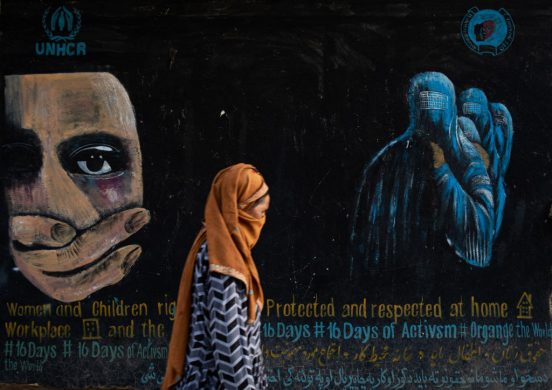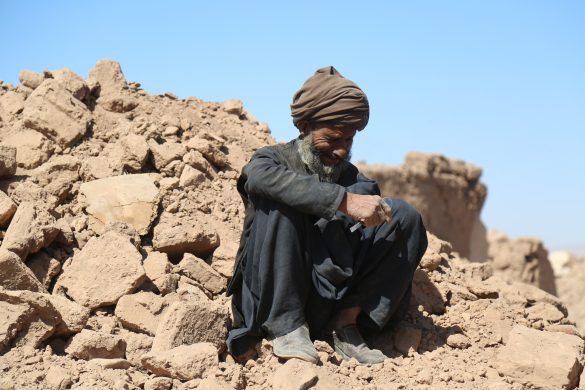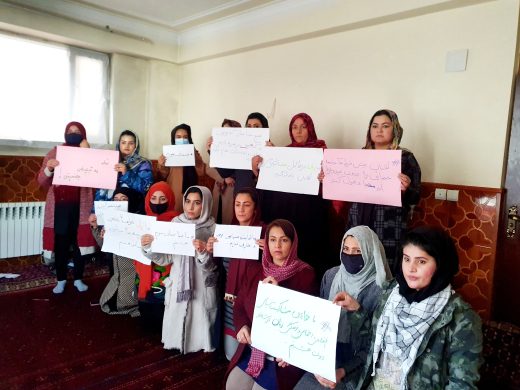GENEVA, 25 May, 2018 (OCHA): A drought is affecting two out of three provinces across Afghanistan with more than two million people expected to become severely food insecure and in need of humanitarian assistance for survival.
Below average snowfall and a precipitation deficit of 70 per cent has been registered in most parts of the country, due to La Niña conditions (see Bulletin 71, December 2017). This has compromised the main wheat planting season of 2017/2018 that lasted from October to February for the fifth year in a row.
Water points and fountains across the country have dried up and the lack of rain and snow melt has made rivers run low or dry up completely. Faced with the lack of water, farmers have chosen to minimise their losses by delaying planting crops and reducing field sizes. “In many cases there was nothing farmers could do but watch the seeds dry out,” said Abdul Majid, the Food Security and Agriculture Cluster (FSAC) Coordinator of UN FAO. “The drought has already negatively and irreversibly impacted the winter agricultural season of 2017/2018 and is expected to also negatively impact the 2018 spring and summer agricultural season. The last harvest must be considered completely lost.”
Winter harvest lost, livestock and livelihoods of thousands of families in peril
The lack of water also affects farmers with livestock and pastoralists like the nomadic Kuchi tribe as pasturelands have partially or completely dried up or are overgrazed, leaving flocks with little or no feed. “Pastures are overfed and animals are eating the plants down to the roots where they can still find them,” said Abdul Majid.
The condition of animals has deteriorated and reduced their milk production which has led to distress sales and death of livestock: sheep prices have decreased from 25 to 40 per cent across the country while fodder prices have doubled. “The animals are too weak to walk to their usual pastures in Badakhshan province and herders have to rent trucks to bring them there,” explained Mr. Majidi, the Head of Agricultural Department of Kunduz Province.
Some 1.5 million goats and sheep in the North-Eastern Region are struggling to find food and more than 600 out of nearly 1,000 villages in the province are suffering from the lack of water.
The most affected are small livestock holders with ten animals or less. These families are at high risk of food insecurity as once their flocks are drastically reduced, the core breeding animals may be endangered and whole livelihoods are at risk.
Some communities in Hilmand Province have also reportedly started to use their irrigated fields as pastures as a coping mechanism – potentially saving their animals but in consequence not planting crops that could get them through the next lean season.
Conflict exacerbates the effects of the drought
The intensified conflict across many parts of the country exacerbates the effects of the drought and has limited the communities’ access to markets: in Hilmand, village elders reportedly need to obtain special approval from the armed groups controlling their districts to access markets in areas under Government control.
In Uruzgan Province, people often cannot access the main market in Tirinkot due to fighting and insecurity on the roads to the provincial capital. Following a temporary closure of the road to neighbouring Kandahar Province in April due to fighting, wheat prices went up by 50 per cent in the city itself, and the price for fresh produce quadrupled within days.
First migration movements due to the drought in the Western Region
At the beginning of May, the first migration movements were reported from Badghis and Ghor provinces to Hirat City, Hirat Province, due to the drought and depleted food stocks of families. By mid-May, more than 21,000 people had been assessed by humanitarian partners and verified as having migrated due to the drought.
Mohammad Aman from a village in Badghis is one of the people who was forced to leave his home.
He used to work the land of a landowner but the drought destroyed the crops, killed all the animals and left his employer unable to feed his own family, let alone pay Mohammad Aman’s salary.
The fifty-year old saw no other option than to go to the provincial capital Qala-e-Naw, hoping to find work in the city or assistance. “My entire family’s eyes are on my empty pockets and my inability to buy bread to fill their bellies,” he said. “It is difficult for a father so see his children going hungry.” His family was selected for emergency assistance and received wheat flour, rice, oil, sugar, pulses and salt from World Vision International (WVI) as part of a project to support more than 1,800 vulnerable families in Badghis funded by the Common Humanitarian Fund (CHF)-Afghanistan.
Humanitarian partners are gearing up, need $115 million for six-month response
In the 20 provinces most affected by the drought, nearly 15 million people rely on farming, livestock or labour opportunities in agriculture. Of these, an estimated 2 million people will become severely food insecure due to the drought. Humanitarian partners are ramping up their response across the country (see map next page), trying to reach 1.4 million of the most vulnerable girls, boys, women and men struck by the drought. Partners urgently need $115 million; the majority of this amount will provide food support to help families through the lean season and to provide them with drinking water for six months.
A quick, comprehensive response will enable the delivery of food and water to the rural villages and help to avoid the migration of families to cities where they risk losing all of their few possessions, and where they lack shelter and access to health facilities and schools for their children.














